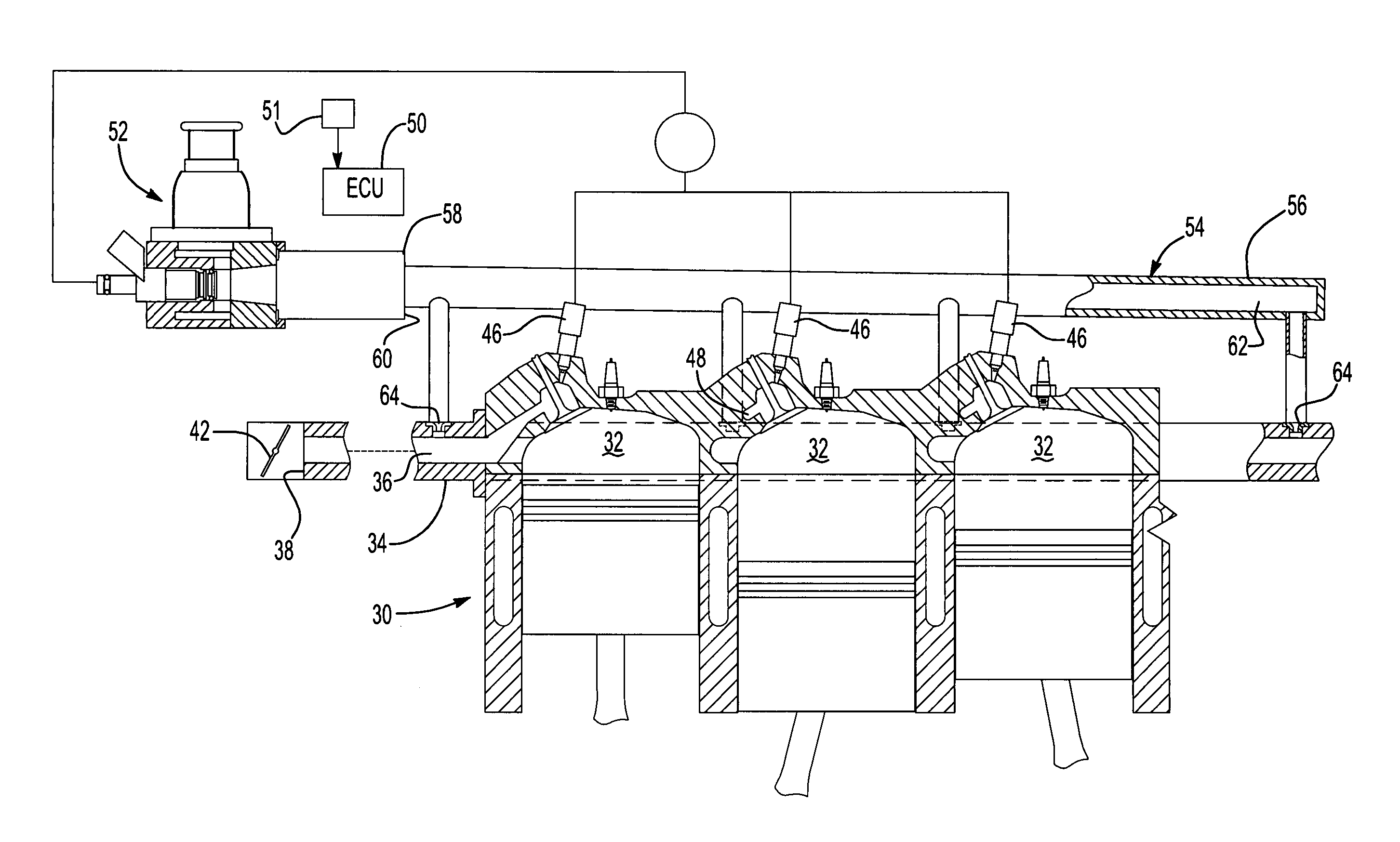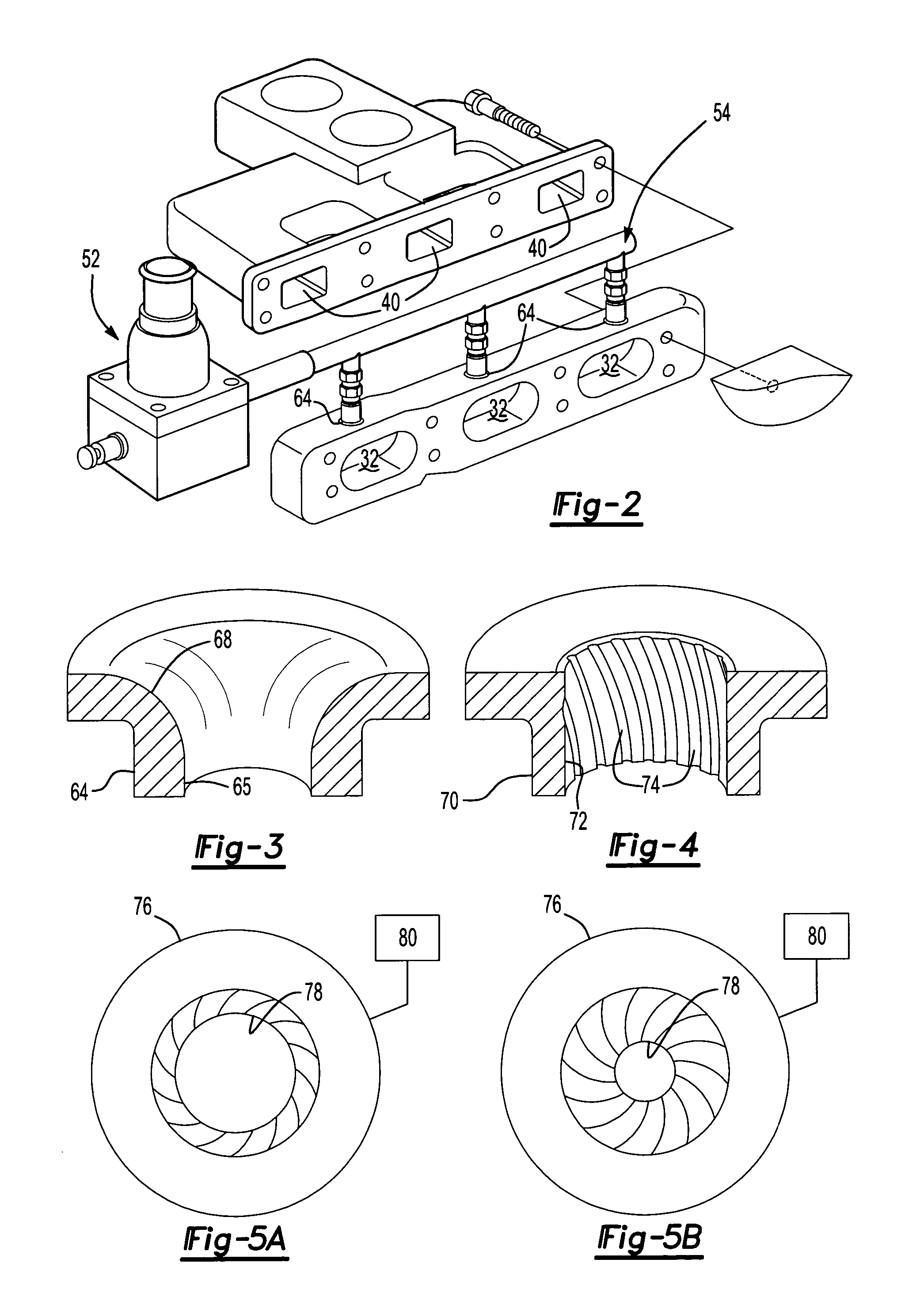Fuel control system
a fuel control system and cold start technology, applied in the direction of electric control, combustion air/fuel air treatment, engine starters, etc., can solve the problems of increased noxious emissions from the engine, insufficient fuel vaporization, and high fuel consumption, so as to reduce the possibility of fuel condensation in the intake manifold, accelerate engine starting, and improve fuel vaporization
- Summary
- Abstract
- Description
- Claims
- Application Information
AI Technical Summary
Benefits of technology
Problems solved by technology
Method used
Image
Examples
Embodiment Construction
[0029] With reference first to FIGS. 1 and 2, an internal combustion engine 30 having a housing 31 is shown having several internal combustion chambers 32. These internal combustion chambers 32 are typically arranged in one or two banks of three or four internal combustion chambers 32 per bank.
[0030] A primary intake manifold 34 (illustrated only partially) has an interior chamber 36, an inlet end 38 and a plurality of outlet ports 40. The outlet ports 40 are fluidly connected to the engine combustion chamber 32 through intake passageways 41 formed in the engine housing 31 so that each port 40 and each passageway 41 is associated with one or more combustion chambers 32. Thus, during engine cranking, the engine pistons induct air from the inlet 38 of the primary intake manifold 34, through the primary intake manifold interior chamber 36 and the outlet ports 40 and passageways 33 to the combustion chambers 32. A throttle 42 (FIG. 1), illustrated only diagrammatically, is fluidly conne...
PUM
 Login to View More
Login to View More Abstract
Description
Claims
Application Information
 Login to View More
Login to View More - R&D
- Intellectual Property
- Life Sciences
- Materials
- Tech Scout
- Unparalleled Data Quality
- Higher Quality Content
- 60% Fewer Hallucinations
Browse by: Latest US Patents, China's latest patents, Technical Efficacy Thesaurus, Application Domain, Technology Topic, Popular Technical Reports.
© 2025 PatSnap. All rights reserved.Legal|Privacy policy|Modern Slavery Act Transparency Statement|Sitemap|About US| Contact US: help@patsnap.com



